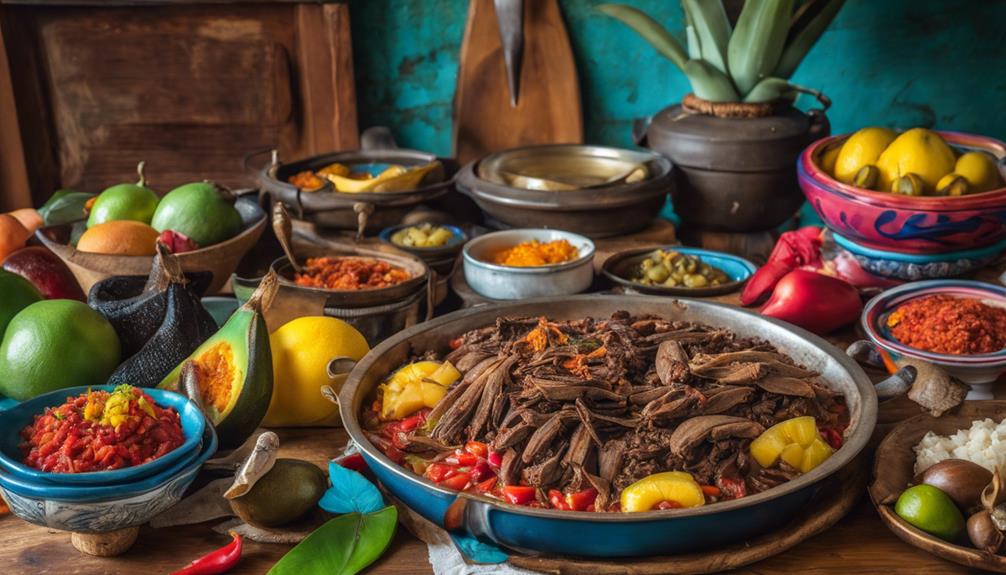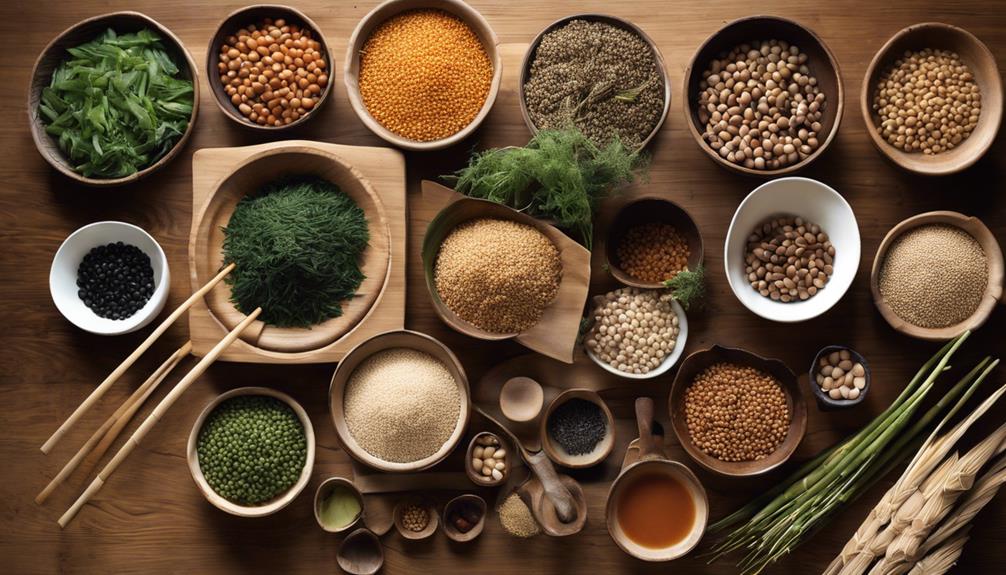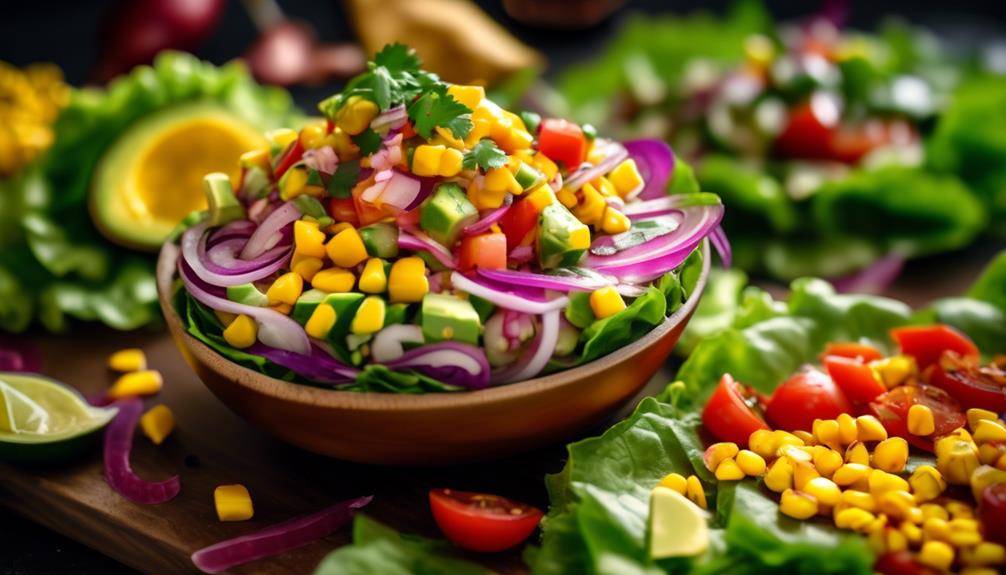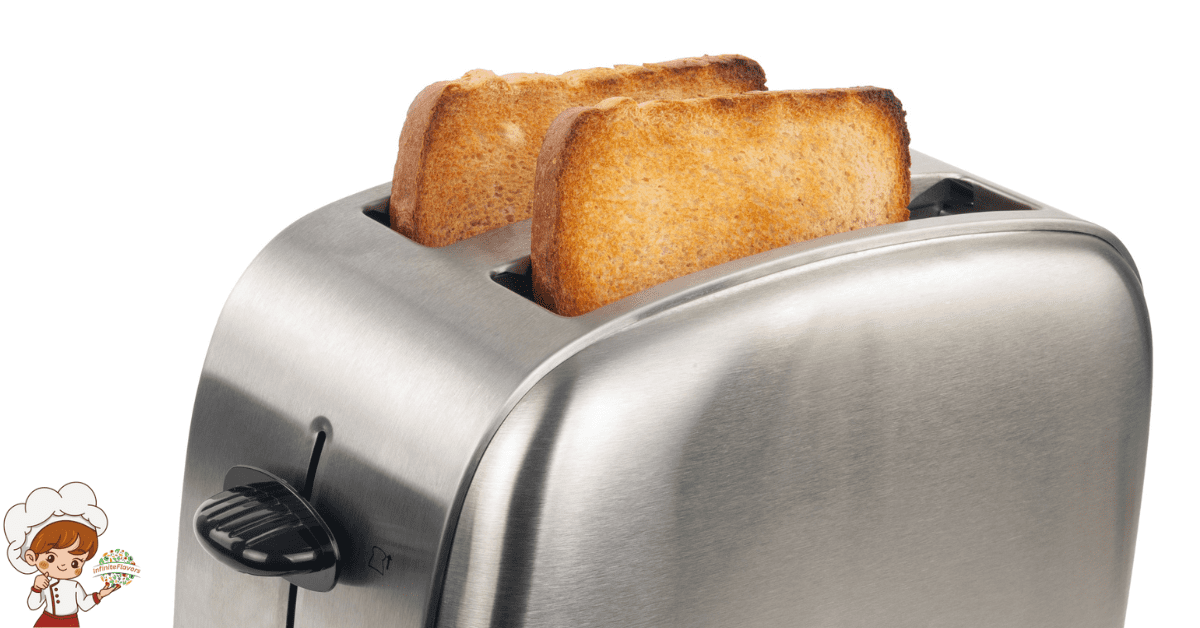The Most Popular Spanish Cheese Varieties
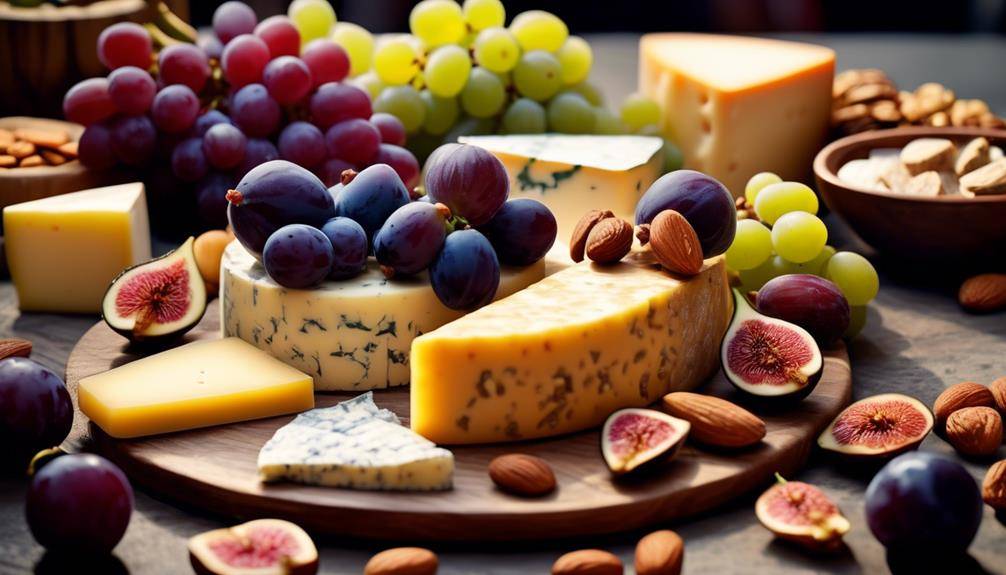
The Most Popular Spanish Cheese Varieties; Did you know that Spain is home to a wide variety of delicious cheeses? From creamy and tangy to bold and blue, there is something for every cheese lover to enjoy. But what makes these Spanish cheese varieties so popular? And what sets them apart from cheeses found in other parts of the world? In this discussion, we will explore the unique characteristics and flavors of some of the most popular Spanish cheeses, leaving you eager to discover the secrets behind these culinary delights. So, let’s dive into the world of Spanish cheese and uncover the hidden treasures that await!
Manchego: Creamy and Tangy Delight
Manchego, a heavenly Spanish cheese known for its creamy texture and tangy flavor, is sure to delight your taste buds. This distinctive cheese hails from the La Mancha region of Spain and is made from the milk of Manchega sheep. Its unique characteristics make it a favorite among cheese enthusiasts worldwide.
While Manchego is undoubtedly delicious on its own, there are also several alternatives to consider if you are looking to explore different flavors. One popular option is Zamorano, a Spanish cheese made from the milk of Churra and Castellana sheep. Zamorano has a similar texture to Manchego but offers a milder and slightly nuttier taste. Another alternative is Idiazabal, a cheese made from the milk of Latxa and Carranzana sheep. It has a smoky flavor that sets it apart from Manchego.
In terms of culinary uses, Manchego is incredibly versatile. Its creamy texture allows it to melt beautifully, making it an excellent choice for grilled cheese sandwiches or quesadillas. It can also be grated and used as a topping for dishes like pasta or salads. Additionally, Manchego pairs wonderfully with fruits such as apples, pears, and grapes, creating a delightful combination of sweet and savory flavors.
When it comes to wine pairings, Manchego is often enjoyed with Spanish red wines like Tempranillo or Rioja. The tanginess of the cheese complements the fruitiness and tannins of these wines, creating a harmonious balance of flavors.
Idiazabal: Nutty and Buttery Bliss
Idiazabal, a Spanish cheese made from the milk of Latxa and Carranzana sheep, offers a delightful combination of nutty and buttery flavors that will captivate your palate. This artisanal cheese is known for its rich taste and unique characteristics, making it a favorite among cheese connoisseurs. Here are some key aspects to understand about Idiazabal cheese:
- Traditional Production: Idiazabal cheese is traditionally made in the Basque Country of Spain. The milk used comes exclusively from Latxa and Carranzana sheep, which graze on the lush pastures of the region. The cheese-making process involves curdling the milk, draining the whey, and pressing the curds. It is then aged for a minimum of two months to develop its distinct flavors.
- Flavor Profile: When you take a bite of Idiazabal cheese, you’ll be greeted with a delightful combination of nutty and buttery flavors. The cheese has a smooth and creamy texture that melts in your mouth, leaving a lingering, slightly smoky aftertaste. Its complex flavors make it a versatile cheese that can be enjoyed on its own or incorporated into various dishes.
- Idiazabal Cheese Recipes: The unique characteristics of Idiazabal cheese make it a perfect ingredient for a range of recipes. From creamy pasta dishes to savory tarts, the cheese adds a distinctive flavor and creamy texture. You can also enjoy it on a cheeseboard, paired with fruits, nuts, and a glass of red wine for a delightful experience.
- Aging Process: The aging process is crucial in developing the flavors of Idiazabal cheese. The cheese is typically aged for a minimum of two months, but some varieties are aged for up to a year or more. During this time, the cheese develops a firmer texture and its flavors become more pronounced. The longer it ages, the more complex and intense the nutty and buttery flavors become.
Idiazabal cheese is a true delight for cheese enthusiasts. Its nutty and buttery flavors, along with its unique characteristics, make it a must-try Spanish cheese. Whether enjoyed on its own or incorporated into various recipes, Idiazabal cheese is sure to satisfy your taste buds.
Cabrales: Bold and Blue
Cabrales cheese, with its bold and distinctive blue veins, is a remarkable Spanish cheese that demands attention. This bold cheese, often referred to as the “blue cheese of Spain,” has a rich and complex flavor that is not for the faint of heart. Made from a blend of cow, sheep, and goat milk, Cabrales is aged in natural caves in the Picos de Europa mountains, where the unique environmental conditions contribute to its distinctive taste.
The blue veins running through Cabrales cheese are a result of the presence of mold. This mold, Penicillium roqueforti, is responsible for the cheese’s characteristic blue color and strong flavor. The mold is introduced during the cheese-making process and allowed to grow and develop over time. The result is a cheese that is bold, tangy, and slightly spicy, with a creamy texture that melts in your mouth.
Cabrales cheese is often described as having a strong and pungent aroma. The blue veins provide a sharp, tangy taste that is balanced by the creamy, buttery notes of the cheese. The flavors are intense, lingering on the palate long after the cheese has been eaten.
Due to its bold and distinctive characteristics, Cabrales cheese pairs well with strong flavors. It is often enjoyed with crusty bread, fresh fruits, or drizzled with honey. For those who appreciate the complexity and richness of blue cheese, Cabrales is a must-try.
Queso De Bola: Aged and Savory
Queso De Bola, known for its aged and savory profile, offers a distinctively rich and complex flavor that captivates the palate. Made from the milk of sheep in the Roncal region of Spain, this cheese undergoes a meticulous aging process that contributes to its unique taste and texture.
To fully appreciate the depth of flavor in Queso De Bola, it is important to understand the aging process that it goes through. Here are four key steps in the production of this delectable cheese:
- Curdling: The sheep’s milk is heated and then coagulated using animal rennet. This process forms the curds, which are then cut into small pieces to release the whey.
- Pressing: The curds are placed in molds and pressed to remove excess moisture. This step helps to create a firm and compact texture in the cheese.
- Salting: After pressing, the cheese wheels are immersed in brine for several hours. This salt bath not only enhances the flavor but also acts as a natural preservative.
- Aging: Queso De Bola is aged for a minimum of four months, allowing it to develop its distinctively savory taste. During this time, the cheese undergoes a complex series of chemical reactions, resulting in a rich and intense flavor profile.
Queso De Bola is a versatile cheese that can be enjoyed in various culinary preparations. Here are some popular dishes that showcase its exceptional taste:
- Queso De Bola is often grated and sprinkled over hearty soups and stews, adding a depth of flavor and a touch of richness.
- It pairs wonderfully with cured meats and crusty bread, creating a delightful cheese and charcuterie platter.
- Queso De Bola can also be melted and used to top pizzas or toasted sandwiches, adding a deliciously savory element to these dishes.
- For a simple yet elegant dessert, try serving Queso De Bola with honey and walnuts. The combination of sweet and savory flavors is truly delightful.
Mahón: Salty and Sharp
Continuing our exploration of Spanish cheese varieties, let us now turn our attention to Mahón, a cheese renowned for its salty and sharp characteristics. Originating from the island of Menorca in the Balearic Islands, Mahón is a cheese with a distinct flavor profile that sets it apart from other Spanish cheeses.
Mahón is known for its salty taste, which comes from the sea salt used during the cheese-making process. The saltiness adds a unique dimension to the cheese, enhancing its overall flavor. In addition to its saltiness, Mahón also possesses a sharpness that is a result of the aging process. The longer the cheese is aged, the sharper and more intense the flavor becomes.
Serving suggestions for Mahón are varied, and the cheese can be enjoyed in numerous ways. It can be savored on its own, paired with a glass of red wine, or used as an ingredient in various dishes. Its salty and sharp flavors make it a great addition to cheese platters, where it can be paired with fruits, nuts, and crusty bread. It can also be grated over pasta or melted on top of grilled vegetables for added richness and depth of flavor.
While Mahón is typically known for its salty and sharp characteristics, it is important to note that there are regional variations that offer different flavor profiles. For example, Mahón Reserva, which is aged for a longer period, has a more intense and robust flavor compared to the younger Mahón. These regional variations provide cheese lovers with a range of options to suit their preferences.
Tetilla: Smooth and Mild
When it comes to Tetilla cheese, you can expect a creamy texture and a mild, smooth flavor profile. This cheese is perfect for melting, making it a popular choice for dishes like quesadillas or macaroni and cheese. Its subtle taste allows it to complement a variety of ingredients without overpowering them.
Creamy Texture and Flavor
With its smooth and mild flavor, Tetilla cheese is renowned for its creamy texture, making it a favorite among cheese connoisseurs. This Spanish cheese variety offers a delectable culinary experience that can elevate any dish. Here are four ways you can enjoy the creamy goodness of Tetilla cheese:
- Pair it with crusty bread: The creamy richness of Tetilla cheese complements the crunchy texture of crusty bread, creating a delightful combination of flavors.
- Add it to salads: The creamy texture of Tetilla cheese adds a luxurious element to fresh salads, enhancing the overall taste and mouthfeel.
- Melt it in creamy pasta dishes: When melted, Tetilla cheese creates a velvety sauce that coats the pasta perfectly, resulting in a decadent and comforting dish.
- Use it in creamy cheese sauces: Tetilla cheese can be melted into a creamy cheese sauce, adding a smooth and mild flavor to dishes like macaroni and cheese or au gratin potatoes.
Indulge in the creamy texture and mild flavor of Tetilla cheese with these flavorful combinations and creamy cheese recipes.
Perfect for Melting
Tetilla cheese, with its smooth and mild flavor, is the perfect choice for melting into a velvety sauce or creamy cheese dish. When it comes to melting techniques, Tetilla cheese can be easily melted using various methods. One popular technique is to grate the cheese and sprinkle it over dishes like pasta, potatoes, or vegetables. The heat from the dish will slowly melt the cheese, creating a rich and gooey texture.
Tetilla cheese can also be melted in a saucepan over low heat, allowing it to slowly melt and blend with other ingredients to create a smooth and creamy sauce. As for the best dishes for melting Tetilla cheese, it pairs exceptionally well with grilled sandwiches, quesadillas, and macaroni and cheese. Its smooth and mild flavor adds a delightful creaminess that enhances the overall taste of these dishes.
Roncal: Robust and Earthy
When it comes to Roncal, its flavor profile can be described as robust and earthy, making it a favorite among cheese enthusiasts. This traditional Spanish cheese is produced using time-honored methods that contribute to its distinctive taste. To fully appreciate Roncal, consider pairing it with a glass of red wine or a drizzle of honey to enhance its complex flavors.
Flavor Profiles of Roncal
Roncal, a Spanish cheese known for its robust and earthy flavor, offers a tantalizing experience for cheese connoisseurs. Made using traditional production methods, this cheese has a distinct flavor profile that sets it apart from others. Here are four key characteristics that define the flavor of Roncal:
- Rich and Nutty: Roncal has a deep, nutty taste that lingers on the palate. Its richness comes from the high-quality sheep’s milk used in its production.
- Complex and Intense: The flavor of Roncal is complex, with layers of earthiness and a hint of sweetness. It has a bold intensity that leaves a lasting impression.
- Pleasantly Salty: The cheese has a perfect balance of saltiness, enhancing its overall taste without overpowering the natural flavors.
- Lingering Finish: Roncal’s flavor profile is completed by a long, lingering finish that leaves you wanting more.
With its robust and earthy flavor, Roncal stands out as a remarkable cheese that showcases the mastery of traditional cheese-making techniques.
Traditional Production Methods
Continuing our exploration of Roncal cheese, let’s now delve into the traditional production methods that contribute to its robust and earthy flavor. Roncal cheese is made using traditional production methods that have been passed down through generations. These methods are rooted in the cultural significance of traditional cheese making in the Roncal Valley of Spain. Unlike modern production methods, which prioritize efficiency and standardization, traditional methods emphasize the importance of craftsmanship and preserving the unique characteristics of the cheese.
The cheese is made from raw sheep’s milk, which lends it a distinct flavor. The curds are formed by adding rennet to the milk and then cut by hand to release the whey. The cheese is then pressed and aged in natural caves for a minimum of four months, allowing it to develop its signature robust and earthy taste. The traditional production methods used for Roncal cheese not only contribute to its exceptional flavor but also serve as a testament to the cultural heritage and craftsmanship of the region.
Pairing Suggestions for Roncal
To fully appreciate the robust and earthy flavors of Roncal cheese, consider these expertly crafted pairing suggestions:
- Savor the rich taste of Roncal with a glass of full-bodied red wine, such as Rioja or Ribera del Duero. The boldness of the cheese complements the robustness of these wines, creating a harmonious pairing.
- For a traditional Spanish combination, serve Roncal with sliced chorizo and crusty bread. The smoky, spicy flavors of the chorizo enhance the earthiness of the cheese, while the bread provides a satisfying crunch.
- Try pairing Roncal with fig jam or quince paste. The sweetness of these condiments balances the sharpness of the cheese, creating a delightful contrast of flavors.
- Explore the flavors of Roncal by incorporating it into traditional recipes like potato and cheese croquettes or spinach and cheese empanadas. These dishes allow the cheese to shine while adding a comforting and savory element.
Frequently Asked Questions: The Most Popular Spanish Cheese Varieties
How Long Does It Take to Age Manchego Cheese?
Manchego cheese takes different amounts of time to age depending on the desired flavor and texture. Factors like temperature and humidity play a crucial role in the aging process, influencing the development of its distinct characteristics.
What Is the Best Way to Enjoy Idiazabal Cheese?
To fully appreciate Idiazabal cheese, savor its smoky flavor by pairing it with crusty bread, quince paste, and a glass of red wine. The combination of textures and tastes will elevate your culinary experience.
Is Cabrales Cheese Suitable for Those With Lactose Intolerance?
Cabrales cheese, made from raw milk, is similar to blue cheese. However, it may not be suitable for those with lactose intolerance due to its high lactose content.
Can Queso De Bola Cheese Be Used in Cooking or Is It Best Eaten on Its Own?
Queso de bola cheese can certainly be used in cooking, adding a unique flavor and creaminess to dishes. It pairs well with ingredients like cured meats, fruits, and crackers, making it a versatile choice for both savory and sweet recipes.
What Makes Mahón Cheese Salty and Sharp in Flavor?
The aging process and traditional production methods are what give Mahón cheese its salty and sharp flavor. These techniques enhance the taste and create a distinct profile that sets it apart from other cheeses.
Conclusion
In conclusion, the Spanish cheese varieties mentioned above offer a delightful range of flavors and textures that are sure to satisfy any cheese lover’s palate. From the creamy and tangy Manchego to the bold and blue Cabrales, each cheese offers a unique and distinct taste experience. Whether you prefer a nutty and buttery delight like Idiazabal or a salty and sharp option like Mahón, the Spanish cheese varieties are truly a testament to the rich culinary traditions of the country.



